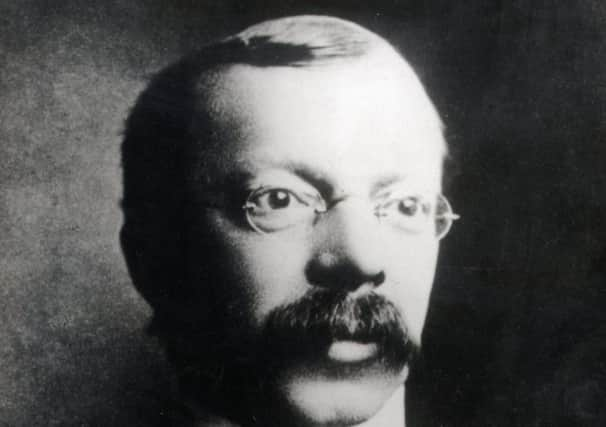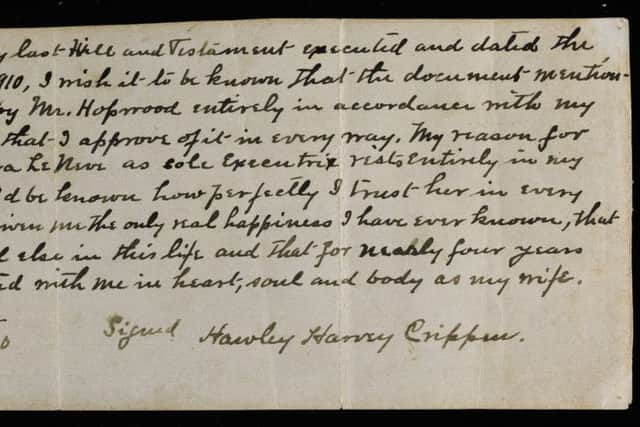The secrets of Dr Crippen’s will revealed


Mention the name Dr Crippen, even after 105 years, and one conjures up an image of murder most foul. Strange in some ways that the case still exerts a macabre fascination because he had killed only one person, his wife, and many men have done that without being remembered a century later.
Perhaps it was because of the unique circumstances of his arrest – as the result of a radio message from the liner on which he was fleeing to Canada with his heavily disguised mistress. Perhaps it was because he was a doctor (albeit one not qualified to practise in England) but took a life. Maybe it was because he was portrayed as a monster (“Wanted for Murder and Mutilation”) but was a mild, meek man. Or could it be because of the romance of his ill-fated affair?
Advertisement
Hide AdAdvertisement
Hide AdWhatever the reason, the case of Hawley Harvey Crippen, born in 1862 in Coldwater, Michigan, is one of the best known in British criminal history. And now his name crops up once more, at an English literature sale at Sotheby’s in London, where an extraordinary document declaring his love for his mistress, written days before his execution on November 23, 1910, surfaces on Tuesday with a guide price of £3,000-£5,000.


The story began when Crippen moved to London with his wife, a noisy, plump, flamboyant and domineering would-be opera singer called Cora Turner, also known as Belle Elmore, and eventually settled at 39 Hilldrop Crescent in Camden Town. The unassuming Crippen worked as a dentist for the Munyon Patent Medicine Company and fell in love with the office typist, Ethel Clara Le Neve, who was barely half his age.
Crippen bought a quantity of the poison hyoscine, pawned his wife’s jewellery, panicked when police began to investigate her disappearance and left for France with his young mistress, leaving an Inspector Dew to find the torso of a body in the cellar.
The lovers fled to Canada from Antwerp on the liner Montrose, with Le Neve disguised as his son, “Master Robinson”. But the captain saw through her disguise and used the wireless, for the first time in criminal history, to contact Scotland Yard. Insp Dew set out for Quebec on a faster ship, the SS Laurentic, and was there to get his man.
Advertisement
Hide AdAdvertisement
Hide AdCrippen protected his mistress at his trial and she was cleared of murder, while the jury took just half an hour to find him guilty. Shortly before his execution, Crippen declared his love for Ethel – his sole executrix – in a codicil to his will: the document that has surfaced at Sotheby’s after passing through the family of the pair’s solicitor, John Rowland Hopgood.
Written on Pentonville Prison notepaper, it reads: “...it should be known how perfectly I trust her in every way, that she has given me the only real happiness I have ever known, that I love her above all else in this life and that for nearly four years she has been united with me in heart, soul and body as my wife.”